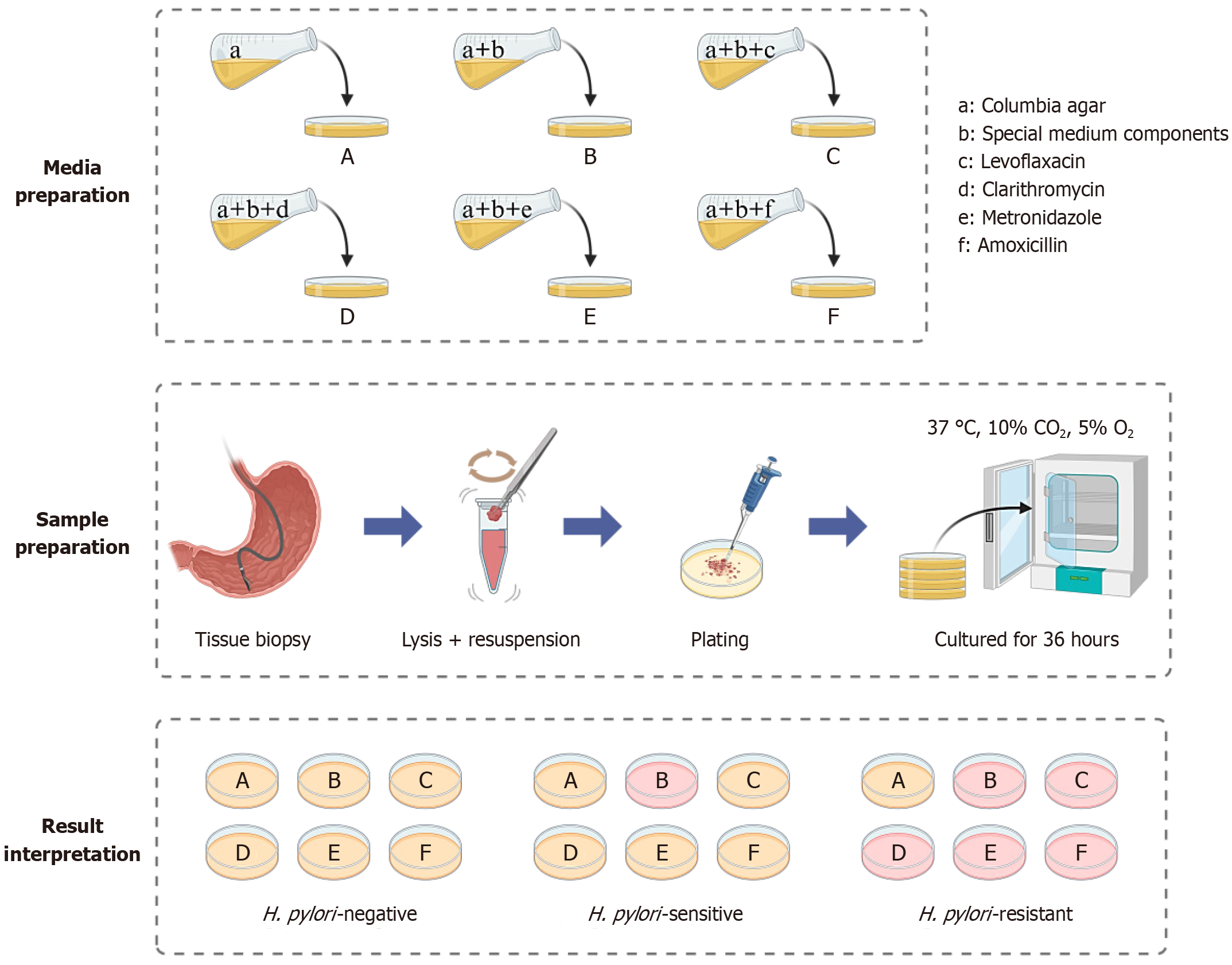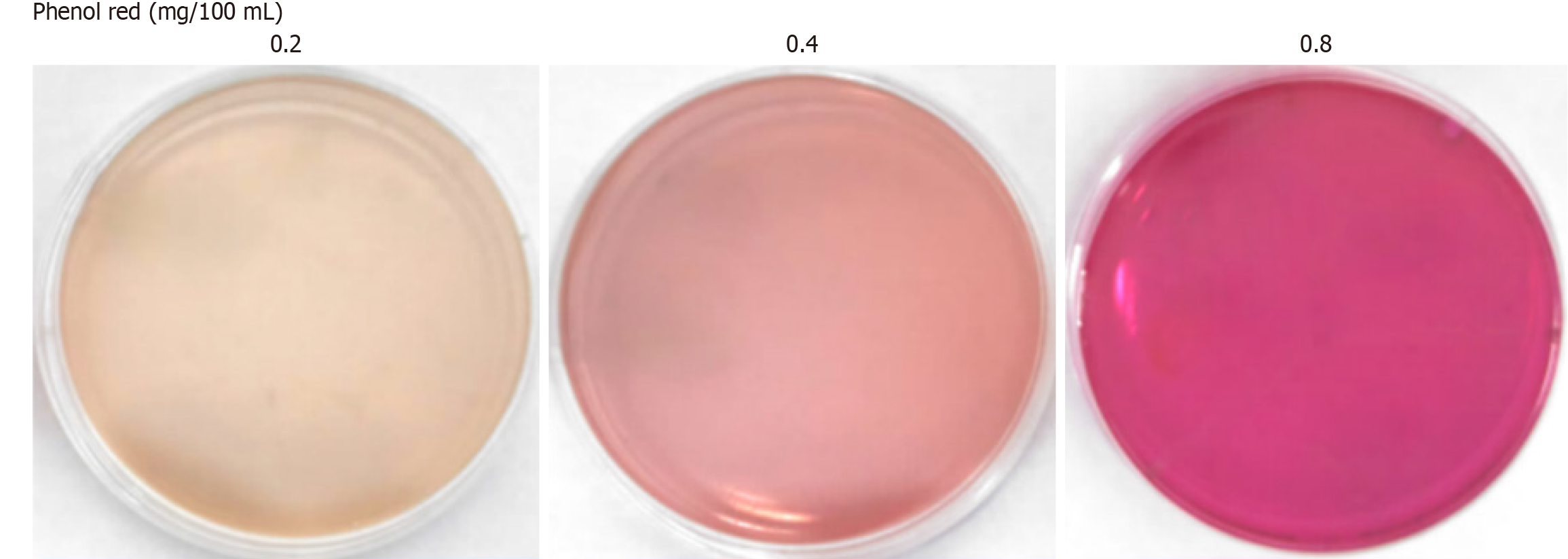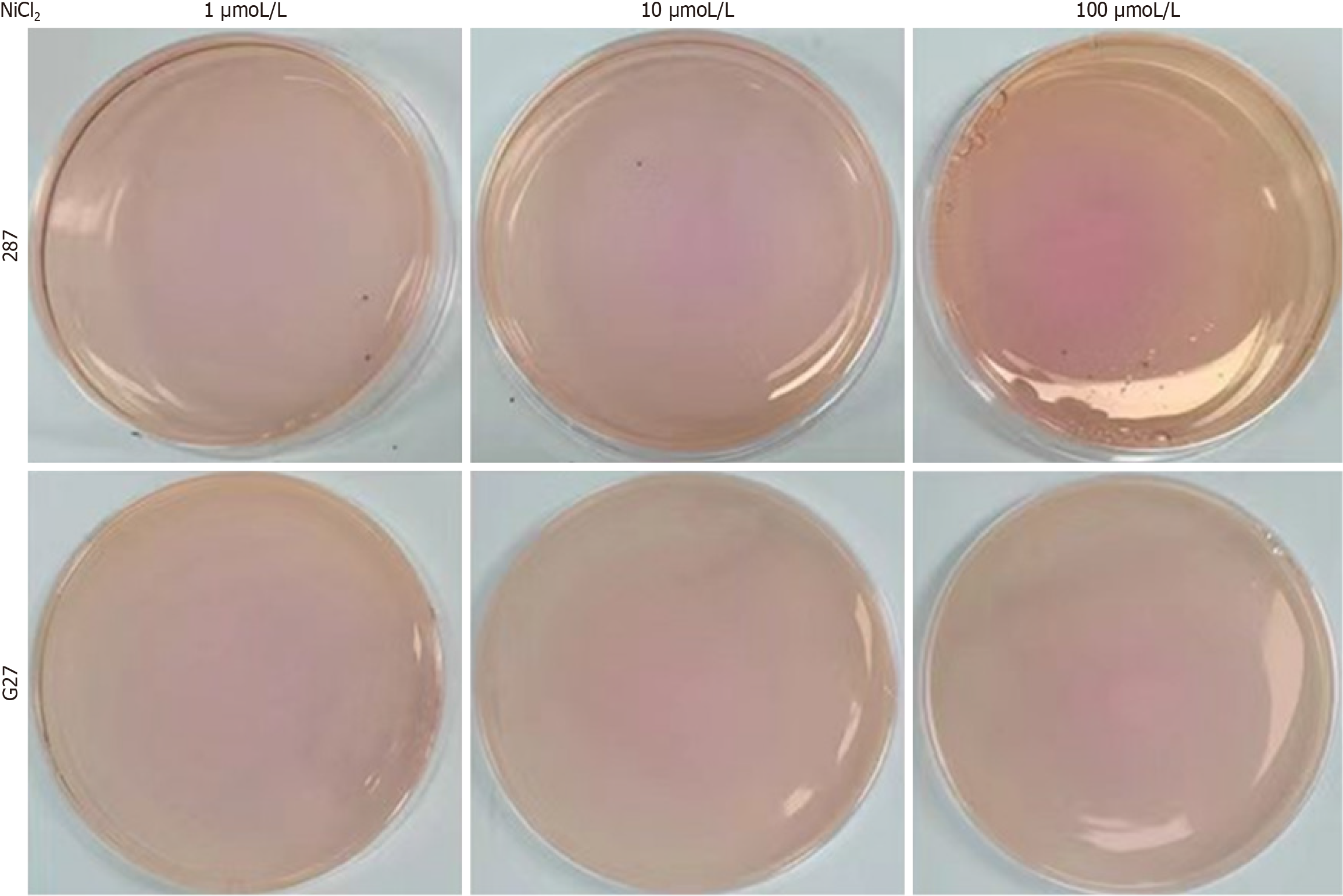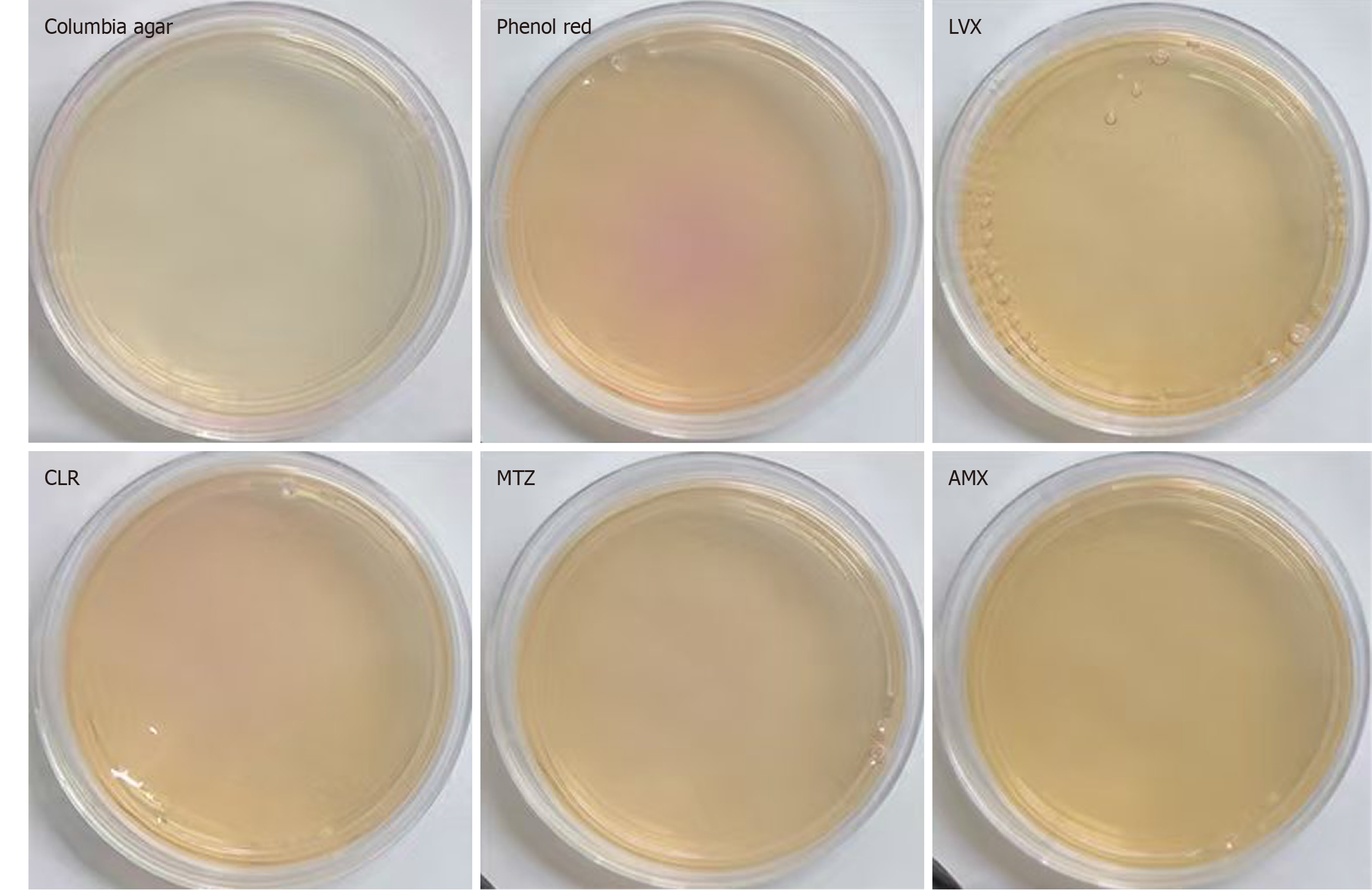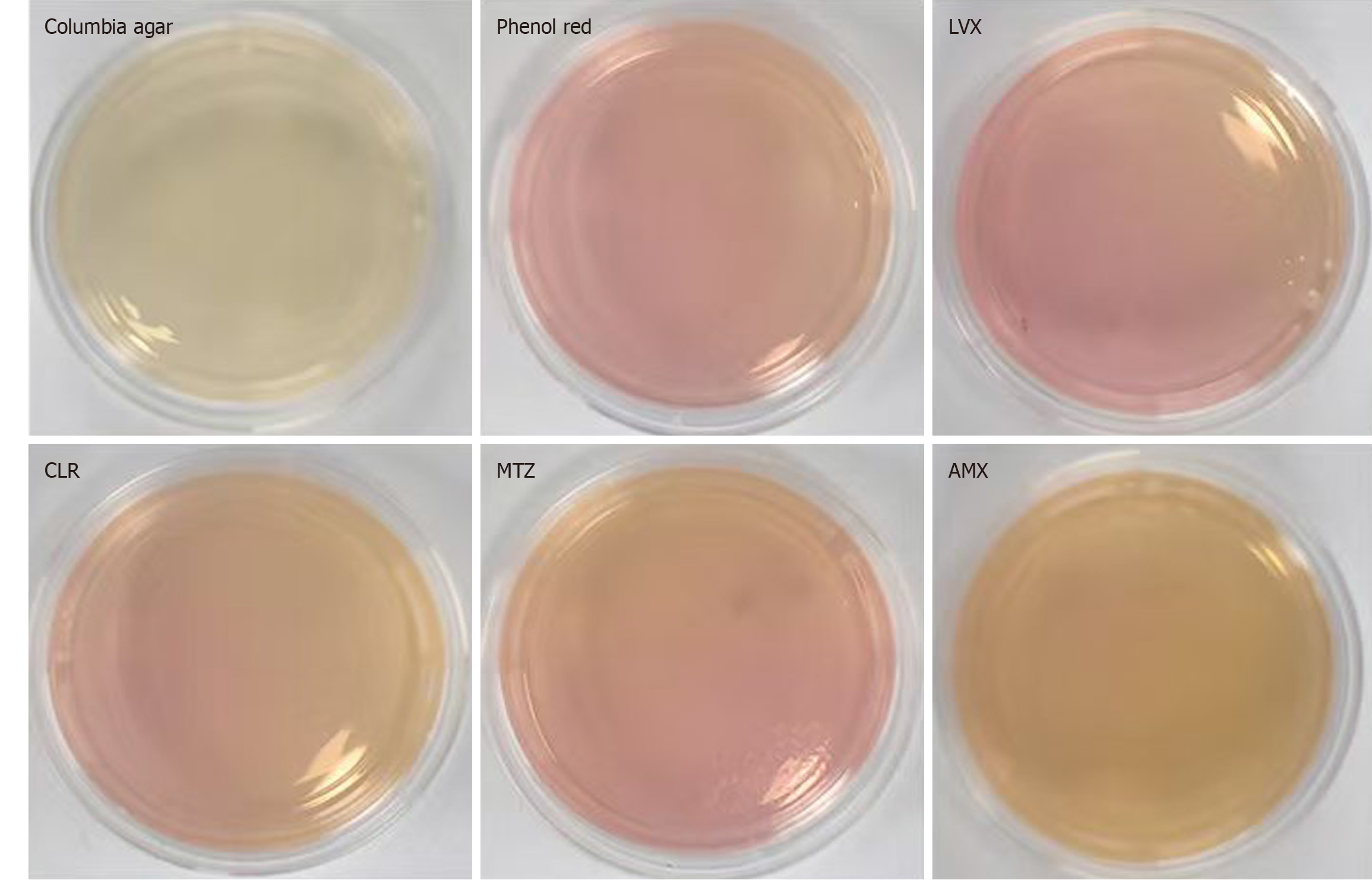Copyright
©The Author(s) 2025.
World J Gastroenterol. Aug 28, 2025; 31(32): 106424
Published online Aug 28, 2025. doi: 10.3748/wjg.v31.i32.106424
Published online Aug 28, 2025. doi: 10.3748/wjg.v31.i32.106424
Figure 1 Schematic illustration of the rapid detection of antibiotic resistance in Helicobacter pylori.
For a given bacterial strain, its resistance to specific antibiotics is determined by the color change of the medium. The yellowish color of the medium indicates that no Helicobacter pylori growth has occurred, whereas the red color indicates the presence of Helicobacter pylori growth. In particular, the appearance of a red color in the medium was employed as an indicator of bacterial resistance. A: It represents Columbia medium; B: It stands for characteristic medium without antibiotics; C: It denotes characteristic medium with levofloxacin; D: It indicates characteristic medium with clarithromycin; E: It refers to characteristic medium with metronidazole; F: It symbolizes characteristic medium with amoxicillin. H. pylori: Helicobacter pylori.
Figure 2 The discoloration reaction observed in Helicobacter pylori cultures following the addition of urea and phenol red.
0.2-0.8 mg/100 mL phenol red had no influence on Helicobacter pylori growth. However, when 0.2 mg/100 mL phenol red was added to the medium, the cultured Helicobacter pylori (1 × 105 CFUs/mL) showed minimal color change. The medium turned light red with the addition of 40 mg, and dark red with 80 mg.
Figure 3 The effects of nickel chloride on the degree of discoloration of the medium.
Nickel chloride can promote urease decomposition, phenol red color is more obvious, and it has no effect on bacterial growth and drug resistance. NiCl2: Nickel chloride.
Figure 4 Growth and discoloration of the standard susceptible strain G27 after 36 hours of culture in the characteristic medium.
The strain G27 is a sensitive strain that showed a red color only in the medium without antibiotics (containing phenol red), with no visible color change in other conditions. LVX: Levofloxacin; CLR: Clarithromycin; MTZ: Metronidazole; AMX: Amoxicillin.
Figure 5 Growth and discoloration of the drug-resistant strain 159 after 36 hours culture in the characteristic medium.
Note: The strain 159 is resistant to levofloxacin, clarithromycin, and metronidazole, showing a red color in media containing levofloxacin, clarithromycin, and metronidazole, and phenol red, while no visible color change in the medium with amoxicillin was found. LVX: Levofloxacin; CLR: Clarithromycin; MTZ: Metronidazole; AMX: Amoxicillin.
- Citation: Guan AX, Yang SY, Wu T, Zhou WT, Chen H, Huang ZS, Luo PP, Huang YQ. Novel chromogenic medium-based method for the rapid detection of Helicobacter pylori drug resistance. World J Gastroenterol 2025; 31(32): 106424
- URL: https://www.wjgnet.com/1007-9327/full/v31/i32/106424.htm
- DOI: https://dx.doi.org/10.3748/wjg.v31.i32.106424













